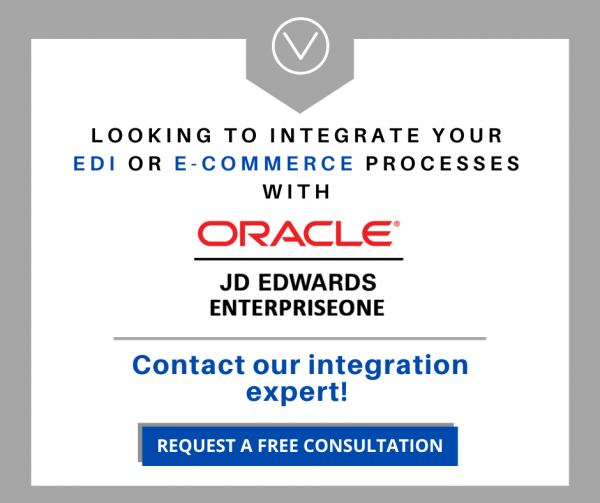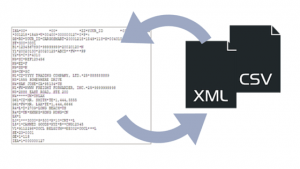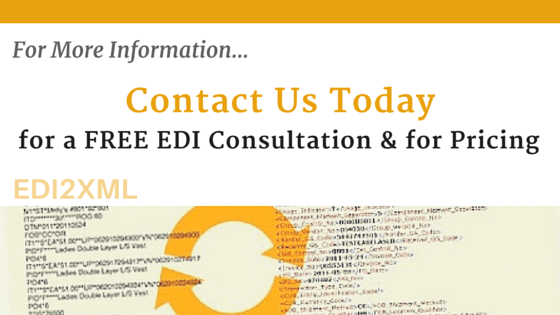This post was updated to reflect current trends and information.
Article written by Pierre Namroud, EDI Integration Specialist & Business Consultant
I had the pleasure of attending Collaborate17, a Technology and Applications Forum for the Oracle community. This opportunity brought together Oracle professionals, integrators, project managers and IT experts from around the world, who all work in different spaces of integration. It was such a great experience speaking with so many Oracle experts and attending educational sessions.
One of the main points of discussion during the various speaking engagements was on the challenges that professionals were facing when it came to integration projects involving EDI (Electronic Data Interchange) as well as eCommerce data to JDE (JD Edwards). The opinions were unanimous in the sense that Oracle still has more work to be done in order to strengthen and simplify integration with legacy EDI protocols and build simpler integration flows for protocols such as X12, EDIFACT, Rosetta Net, etc.
I’m writing this article, in order to share my own expertise as a data and EDI integrator, where I had the chance to be involved in several eCommerce and EDI integration projects with Oracle JDE. Hopefully it will help inform other Oracle professionals looking to overcome some of these integration challenges.
Challenges currently being faced by Oracle JDE professionals
There are many challenges that any JDE professional might see when it comes to data and systems integration with Oracle ERP software in general, whether for on-premises or cloud systems. [As a side note, Oracle’s cloud systems have their own specific limitations that I recently learned about during one of the Collaborate Sessions].
Below, I have listed some of the most common challenges that not only have I experienced in my own projects with Oracle customers but that others have expressed during the Collaborate conference;
- Oracle’s JDE does not have a seamless built-in integration with all EDI X12 documents “out of the box”.
- The current integration process for EDI X12, EDIFACT, HL7 or any other data format now happens by writing into transition tables (or Z files) and then triggering a business function to process those incoming data.
- Even though Oracle’s JDE system supports business functions, some older versions do not support new API functions, which can cause some headaches.
Looking to integrate your EDI or eCommerce processes with Oracle JDE enterprise one, look no further, since we have the best integration option where we turn your Oracle JDE system into a modern REST API, that receives https requests and acts accordingly. Learn More>
Integration Project Checklist
Before starting an integration project with your Oracle JDE system, I recommend that you go through the following list of questions. This way, you’ll be able to make the best decisions to move forward with development efforts as efficiently as possible.
- Who are the Business or Trading Partners you want to exchange electronic data with?
- Which documents (or types of data) are you requested to exchange from your Business Partners? In normal circumstances, they’ll provide you with the necessary documentation and specifications as a road map and for compliance reasons.
- The exchanged data will be sent under what format or standard/version? (X12, EDIFACT, RosettaNet, XML, custom format…?)
- What is the protocol of communication used to send the data back and forth between you and your Business Partner? Is it point-to-point, such as AS2 or sFTP?
- Is a VAN required in order to transport the data?
- Do you have the necessary expertise to select the appropriate certified communication software (for first time project implementation)?
- Do you have the necessary expertise in your development team to decrypt and understand the terminologies of legacy EDI formats?
- Has your team ever done an EDI integration project, that includes a full certification process?
- How many partners will you be exchanging with? The more partners you have, the more complex the project can become.
- Check the specs of all of your partners (when possible) to verify the differences in their requirements. It is well known in the EDI integration world that there can be many distinctions and exceptions found per Business Partner and per document. Every EDI project can be unique.
- What is the lead-time to complete the certification and testing phase with your business partner before going live?
- What is the volume of exceptions that your development team can currently handle in the project in order to be on time and within budget?
- Do you have the necessary integration tools to simplify the EDI syntax in order to work with one format regardless of the format of the data you receive from different sources?
- Is your team coding directly in Oracle JDE native framework, or are you using any efficient integration tool available today?
- Will you be doing end-to-end integration using Z tables of Oracle JDE, or you are going to use API (or business functions) of JDE?
Recommendations for a Successful Integration Project
As you might have noticed, data integration projects involving legacy EDI protocols or custom data format exchange are not simple. They are projects that need a lot of expertise and experience in data communication and transportation, data mapping and systems integration into Oracle’s JDE system.
Moreover, at most enterprises that we’ve completed EDI integration projects for, it was evident how stretched and overwhelmed the internal JDE development team was in their own day-to-day operations, support and maintenance of the application and were incapable of learning new standards to respect the strict timeline given by Trading Partners. In these cases, they looked for help from an outside Service Provider, such as EDI2XML.
My recommendations for such projects are as follows:
- Outsource the EDI part of the project to a reliable Service Provider, who is highly focused on service availability and quality, since EDI is quite sensitive. This will allow your team to continue working on their daily tasks and keep doing what they do best (JDE support and maintenance, for example). This way, you’ll have a simplified and streamlined EDI integration process; you build one tunnel between your EDI provider, where they deal with the exceptions, and your own process.
- In case your company policy requires you to deploy the EDI integration solution on-premises, make sure to use an efficient EDI conversion tool such as our EDI2XML technology that has the capability to turn the EDI documents from X12 format to a human readable XML format, for example.
- Equip your team with the right tools for data integration such as Magic xpi, which we have been using for many years in our data and systems integration projects. Leveraging such technologies allowed us to integrate anything-to-anything (JDE to SAP, SAP to Salesforce, EDI to any system as examples).
I sure hope I was able to expose the most common EDI integration challenges and complexities and help you to overcome these obstacles with the above checklist and recommendations.
If you are interested in learning more about this topic or any other issue related to EDI integration projects, please click on the image below and I will be more than happy to contact you personally for a FREE consultation.




